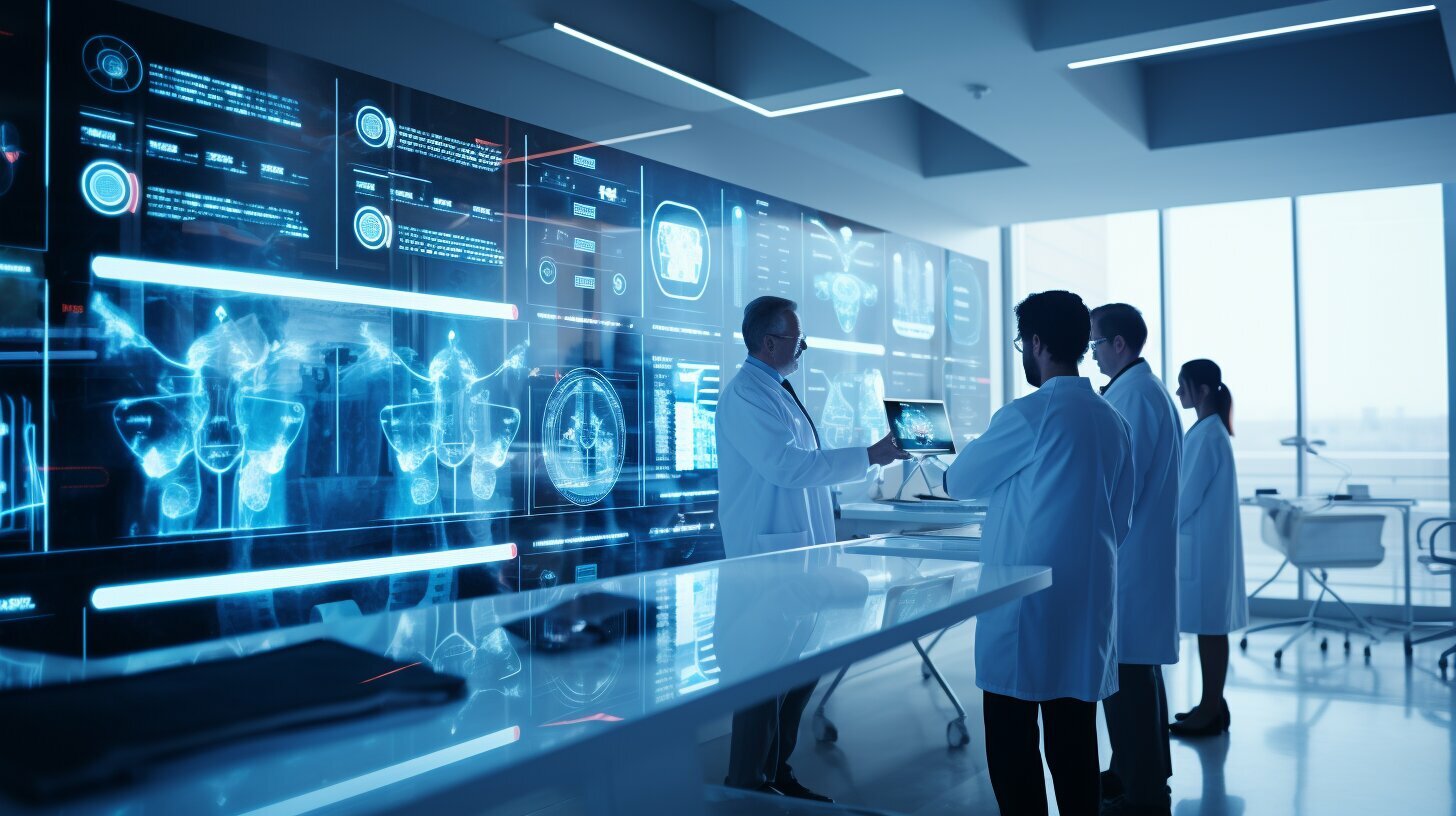Do you feel prepared to see the exceptional capabilities of AI in medical imaging?
Brace yourselves, as we embark on a journey to reveal the future of this groundbreaking technology.
Advanced imaging techniques, enhanced diagnostic capabilities, precision and accuracy in diagnosis, personalized treatment planning, and streamlined workflow and efficiency – these are just a glimpse of what awaits us.
Join us as we break barriers and explore how medical imaging AI will revolutionize the field of healthcare.
Key Takeaways
- Real-time imaging and advanced techniques enhance diagnostic accuracy and patient outcomes.
- AI-powered medical imaging reduces the risk of misinterpretation and human errors, leading to improved patient outcomes and timely interventions.
- AI algorithms enable personalized treatment planning by assessing the risk of disease progression and treatment response.
- Medical imaging AI revolutionizes healthcare workflows through automation, increasing efficiency in diagnosing and triaging patients and freeing up healthcare professionals to focus on critical tasks.
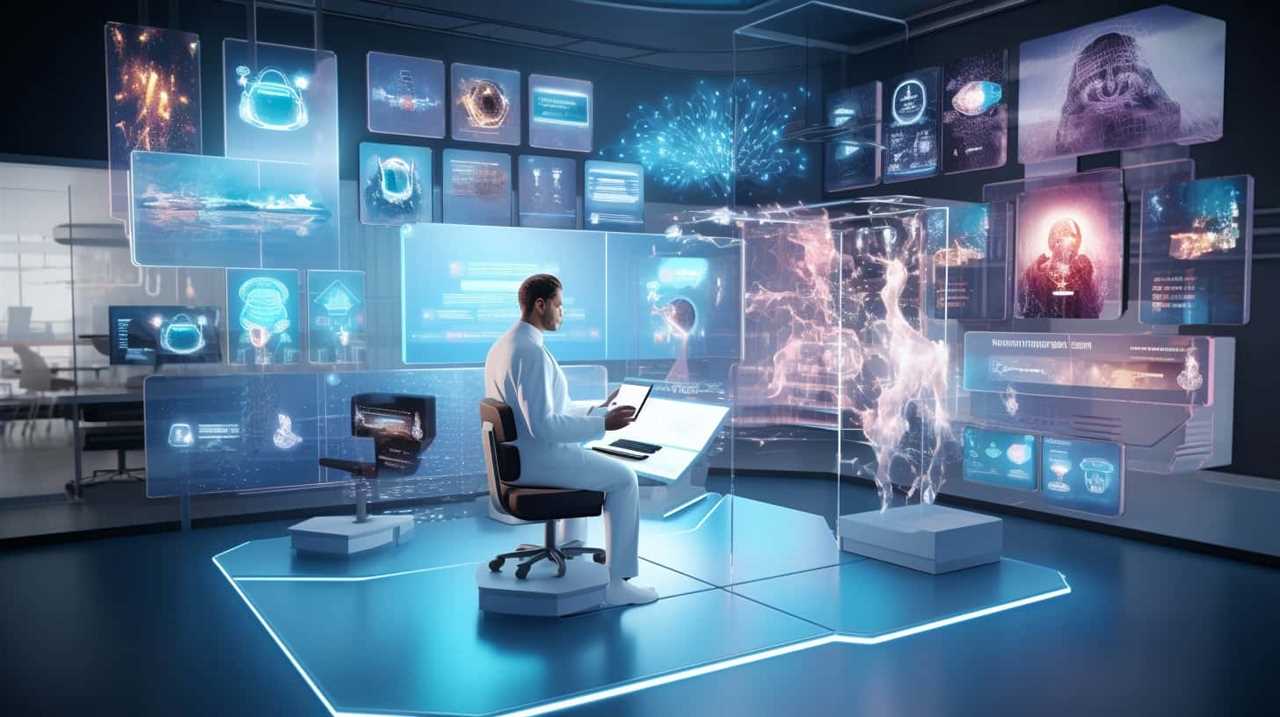
Advanced Imaging Techniques
We are revolutionizing medical imaging with advanced techniques that enhance diagnostic accuracy and improve patient outcomes.
One of the key advancements in this field is real-time imaging. Real-time imaging allows healthcare professionals to capture and analyze images in the moment, providing immediate and crucial information for accurate diagnosis and treatment planning. This technique eliminates the need for time-consuming image processing, streamlining the workflow and reducing patient waiting times.
Moreover, real-time imaging enables image-guided interventions, where medical procedures are performed with the assistance of real-time imaging guidance. This ensures precise targeting of the affected area, minimizing the risks and improving the overall success rate of interventions.
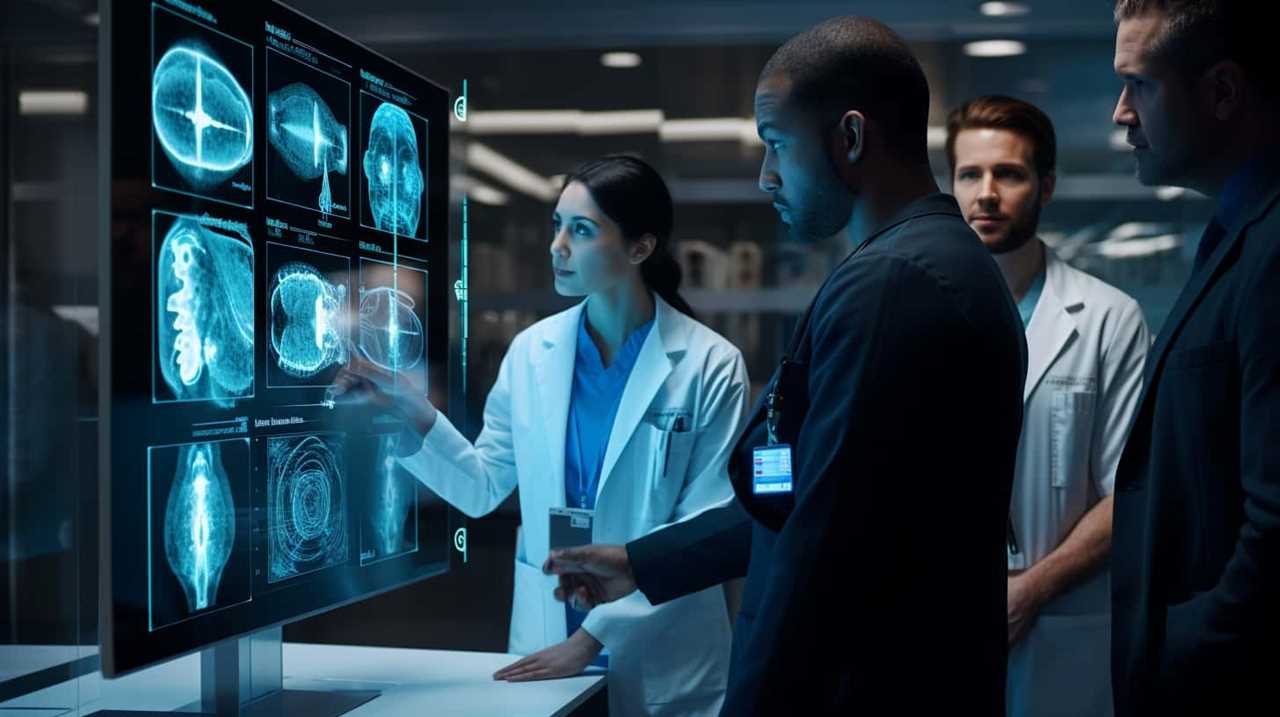
Enhanced Diagnostic Capabilities
With the integration of real-time imaging and image-guided interventions, our medical imaging advancements are now enhancing diagnostic capabilities through improved accuracy and immediate access to crucial information.
Automated interpretation and real-time analysis are revolutionizing the field of medical imaging, allowing for more efficient and accurate diagnoses. Through the use of artificial intelligence algorithms, medical images can be automatically analyzed and interpreted, reducing the reliance on human interpretation and potentially reducing errors.
Real-time analysis further enhances diagnostic capabilities by providing immediate feedback and allowing for prompt decision-making. This real-time analysis can be particularly beneficial in emergency situations where time is of the essence.

Precision and Accuracy in Diagnosis
To further enhance diagnostic capabilities, medical imaging AI is poised to revolutionize precision and accuracy in diagnosis by consistently providing real-time analysis and immediate feedback. By leveraging advanced algorithms and machine learning techniques, AI systems can analyze medical images with great accuracy, detecting even the most subtle abnormalities that a human eye might miss.
This enhanced precision translates into improved patient outcomes, as conditions can be identified at earlier stages, leading to timely interventions and treatments. Additionally, AI-powered diagnosis reduces the risk of misinterpretation and human errors, ensuring consistent and reliable results.
By streamlining the diagnostic process, medical imaging AI also contributes to reducing healthcare costs, as it minimizes the need for unnecessary tests and procedures.
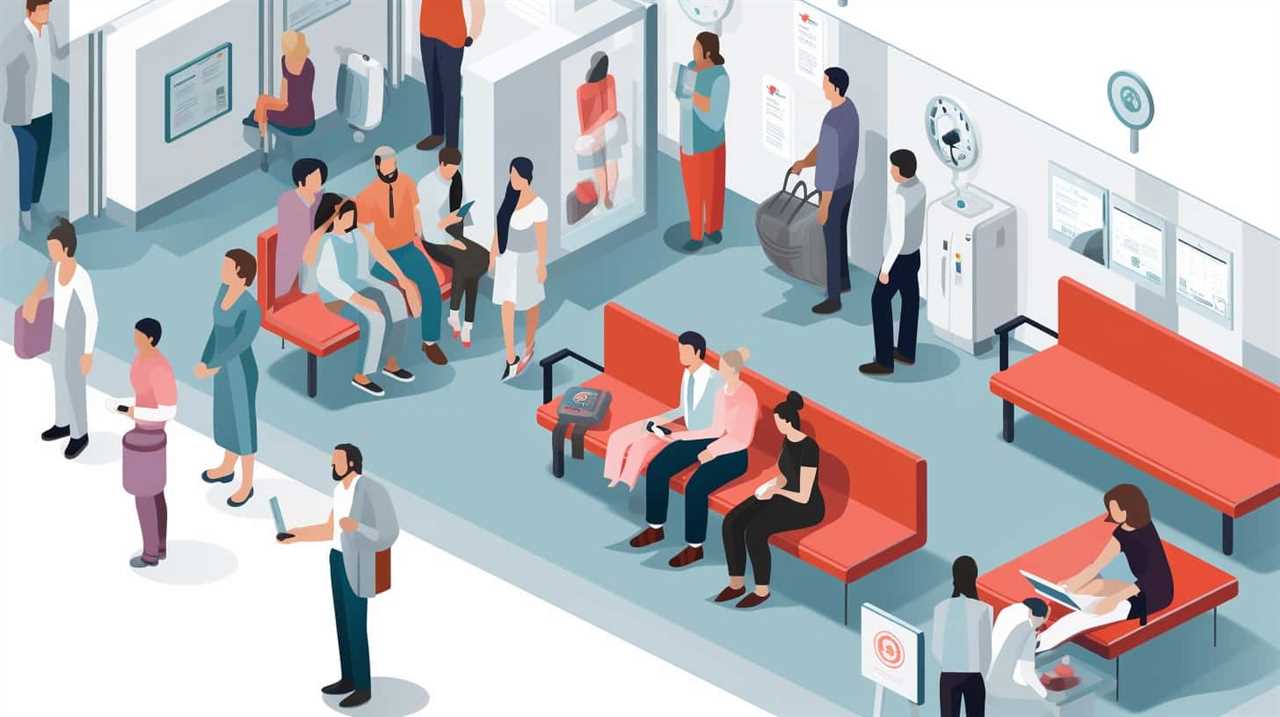
Personalized Treatment Planning
The integration of medical imaging AI allows us to leverage advanced algorithms and machine learning techniques for personalized treatment planning. This groundbreaking technology revolutionizes the way we approach patient care, ensuring treatment optimization and patient-centric care.
Here are four key aspects of personalized treatment planning:
- Accurate diagnosis: By analyzing medical images with AI algorithms, we can precisely identify and characterize abnormalities, providing a solid foundation for personalized treatment plans.
- Risk assessment: AI-powered tools can assess the risk of disease progression and treatment response, enabling healthcare professionals to tailor treatment strategies based on individual patient needs.
- Treatment selection: Medical imaging AI can assist in selecting the most appropriate treatment options by considering the patient’s unique characteristics and the potential benefits and risks associated with each option.
- Monitoring and adaptive therapy: AI algorithms can continuously analyze medical images during treatment to monitor the response and make real-time adjustments to therapy, ensuring optimal outcomes for patients.
With personalized treatment planning, we’re entering a new era of healthcare that prioritizes individual needs and maximizes treatment effectiveness.
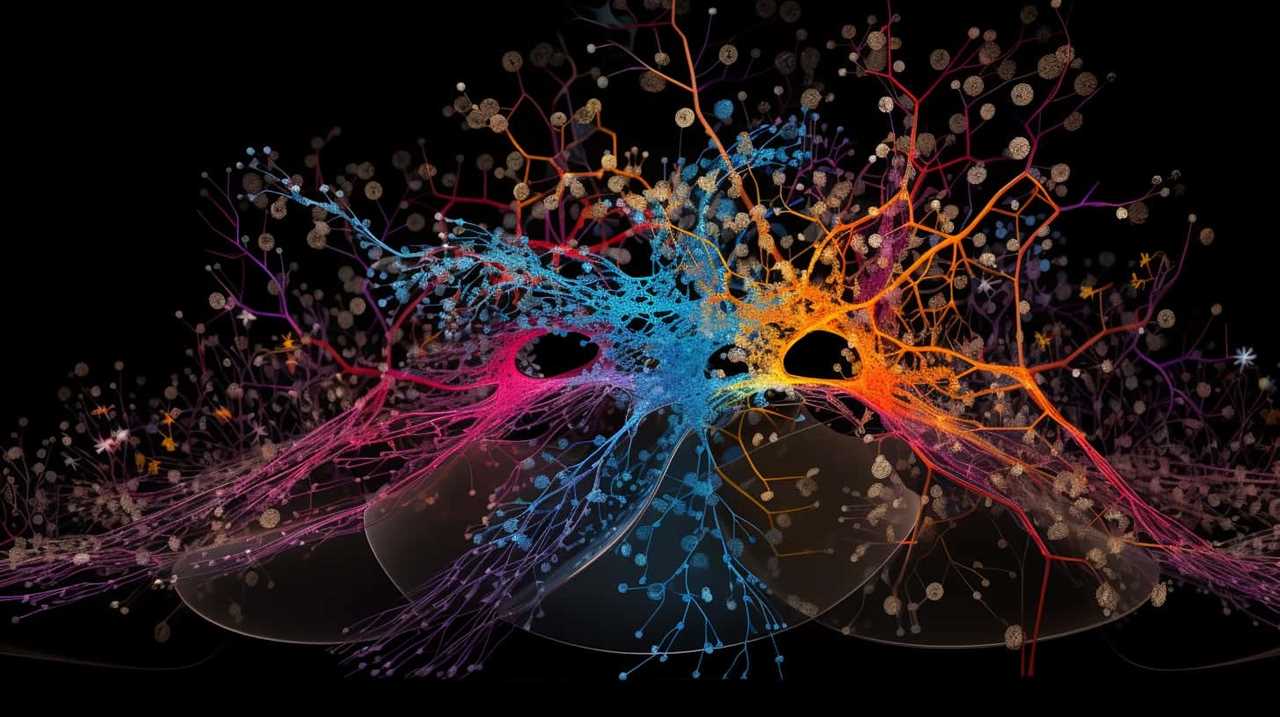
Streamlined Workflow and Efficiency
How can medical imaging AI contribute to a streamlined workflow and increased efficiency in healthcare?
By leveraging automation benefits and time-saving technology, medical imaging AI has the potential to revolutionize healthcare workflows. With the ability to analyze and interpret medical images with speed and precision, AI algorithms can assist radiologists in diagnosing and triaging patients more efficiently.
Through automation, routine tasks such as image processing, data extraction, and report generation can be expedited, freeing up valuable time for healthcare professionals to focus on more complex cases. This not only reduces the burden on radiologists but also improves patient care by reducing waiting times and enabling faster treatment decisions.

Frequently Asked Questions
What Are Some Examples of Advanced Imaging Techniques Used in Medical Imaging Ai?
Examples of advanced imaging techniques used in medical imaging AI include magnetic resonance imaging (MRI), computed tomography (CT), positron emission tomography (PET), and ultrasound. These techniques provide detailed and accurate images for diagnosis and treatment planning.
How Does Enhanced Diagnostic Capabilities in Medical Imaging AI Improve Patient Outcomes?
Enhanced diagnostic capabilities in medical imaging AI improve patient outcomes by providing more accurate and timely diagnoses. This leads to earlier detection and treatment of diseases, reducing morbidity and mortality rates. Additionally, it increases healthcare efficiency by streamlining the diagnostic process.
What Is the Role of Precision and Accuracy in Diagnosis When It Comes to Medical Imaging Ai?
In medical imaging AI, precision and accuracy play a crucial role in diagnosis. They ensure reliable and consistent results, leading to improved patient outcomes. The future of medical imaging AI relies on advancements in these areas.
How Does Personalized Treatment Planning Contribute to Better Patient Care in Medical Imaging Ai?
Personalized treatment planning in medical imaging AI allows us to tailor patient care, leading to improved outcomes. By analyzing individual characteristics and medical history, we can optimize treatment strategies and ensure the best possible care for each patient.
Can You Explain the Ways in Which Streamlined Workflow and Efficiency Are Achieved in Medical Imaging Ai?
In medical imaging AI, we achieve streamlined workflow and efficiency through various methods. By automating tasks such as image analysis and report generation, we reduce manual effort and improve overall productivity, leading to faster and more accurate diagnoses.

Conclusion
In conclusion, the future of medical imaging AI is set to revolutionize the field of healthcare.
With advanced imaging techniques, enhanced diagnostic capabilities, and precision in diagnosis, the potential for personalized treatment planning is vast.
Moreover, the streamlined workflow and efficiency brought about by AI will further elevate the quality of patient care.
Brace yourselves for a groundbreaking era in medicine, where the boundaries of what’s possible will be shattered like glass.





